#Balaenoptera acutorostrata acutorostrata
Explore tagged Tumblr posts
Text

North Atlantic minke whale "Balaenoptera" acutorostrata acutorostrata
Observed by pcrosson, CC BY-NC
#Balaenoptera acutorostrata acutorostrata#North Atlantic minke whale#Cetacea#Balaenopteridae#cetacean#whale#North America#United States#Massachusetts#Atlantic Ocean#Gulf of Maine
282 notes
·
View notes
Note

Trick or Treat!
I couldnt find a costume that fit. Please do not eat me.
(I hope you like the drawing)
Aaaaa this is adorable!! I so loved your drawing, and still do. Makes me smile every time :D Thank you for your participation. For you of course also a treat (and it won't be yourself, lol). I thought I'd try my hand at some cetacean photo studies for these trick or treat asks! Might move things a bit along and I want to practice more at environments. Not sure how long this trend will last lol but for now here's a fellow minke!

Reference is this beautiful photo from inaturalist, shared under de CC-BY-NC license. I loved the moody atmosphere and the reflection on the surface. Did this one in about 30-40 minutes so it's pretty rough but I do like the result. I hope you like it too!
#paintings#Common minke whale#Minke whale#Balaenoptera acutorostrata#Balaenoptera#whale#baleen whale#mysticete#digital art
30 notes
·
View notes
Text
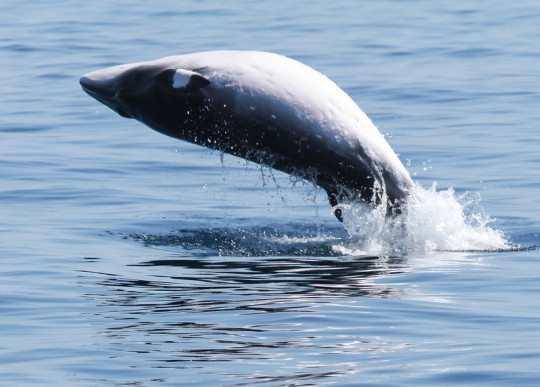
A common minke whale (Balaenoptera acutorostrata) breaches the water in Dana Point, California, USA
by Muriel N.
#common minke whale#minke whale#whales#cetaceans#balaenoptera acutorostrata#balaenoptera#balaenopteridae#cetacea#artiodactyla#mammalia#chordata#wildlife: california#wildlife: usa#wildlife: north america
81 notes
·
View notes
Text
🐋Daily Cetacean Fact:🐋
Minke Whale: The common minke whale is the smallest baleen whale in North American waters. The scientific names for minke whales translate to: "winged whale," (Balaenoptera) "sharp snout" (acutorostrata). They received their common name from a Norwegian novice whaling spotter named Meincke, who supposedly mistook a minke whale for a blue whale.
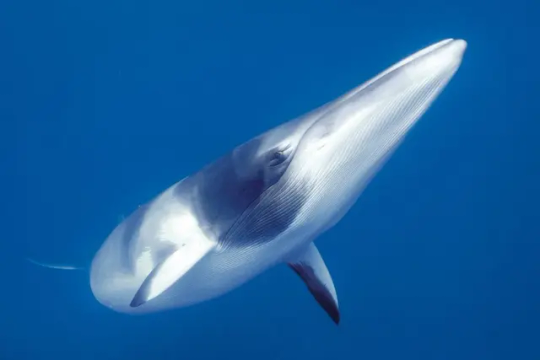
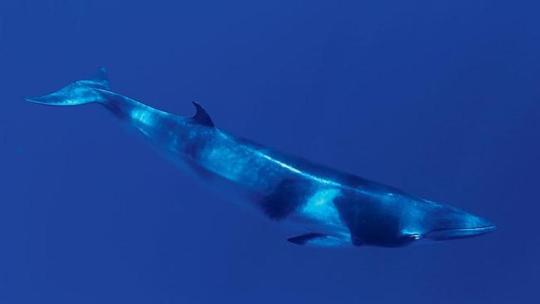
#minke whale#whale#whale post#whale fact#daily whale#daily whale fact#facts about whales#cetacean#cetacean post#cetacean fact#daily cetacean#daily cetacean fact#facts about cetaceans#respect the locals#shark blog#marine mammals#marine life#marine animals#marine biology#marine#marine life blog#marine mammal post#advocacy for marine life#ocean animal#ocean life#ocean#ocean life blog
109 notes
·
View notes
Text

Minke Whale (Balaenoptera acutorostrata)
13 notes
·
View notes
Text

The #commonminkewhale or northern minke whale (Balaenoptera acutorostrata) is a species of minke whale within the suborder of baleen
2 notes
·
View notes
Text
Kaskelotteja (Physeter macrocephalus) ja lahtivalas (Balaenoptera acutorostrata) Norjanmeressä, ja sit pullokuonodelfiinejä (Tursiops truncatus) Särkänniemen delfinaariossa
whale reference chart :)
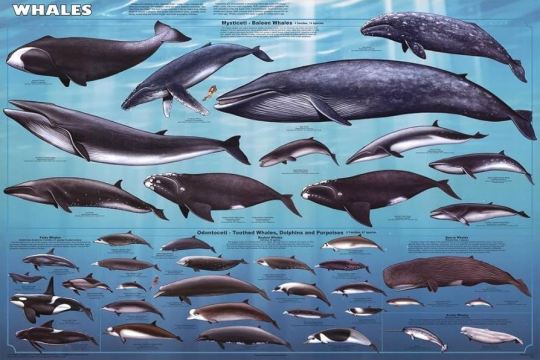
pls reblog for sample size etc
follow for more occasional useless polls :)
3K notes
·
View notes
Text
What Types of Whales Can Be Seen Near the Gold Coast?
The majestic coastline of the Gold Coast, Australia, offers one of the most spectacular natural shows in the world: the annual migration of whales. Each year, from late autumn to early spring, thousands of people gather to witness these incredible creatures as they journey along the eastern seaboard. This thriving marine environment makes the region a hotspot for whale watching. For those eager to learn about the whales Gold Coast is famous for, this comprehensive guide explores the different species commonly sighted and the best times to see them.

Humpback Whales – The Stars of the Migration
The most commonly sighted species of whales Gold Coast waters are known for is the Humpback Whale (Megaptera novaeangliae). These gentle giants migrate between their feeding grounds in Antarctica and their breeding grounds in the warmer waters of Queensland.
During their migration, humpbacks pass close to the Gold Coast, making them easy to spot from both the shore and boats. They are well known for their acrobatic displays, such as breaching, tail slapping, and spy-hopping, which make them a favorite among whale watchers.
Key Facts About Humpback Whales:
Grow up to 16 meters in length
Weigh up to 40 tonnes
Known for their complex songs and social behaviors
Best sightings from June to November
Southern Right Whales – A Rarer Sight
While less common than humpbacks, Southern Right Whales (Eubalaena australis) are occasionally spotted in the waters off the Gold Coast. These whales are named for being the “right” whales to hunt in the past due to their slow movements and tendency to float when killed—thankfully, they are now protected and slowly recovering in numbers.
Their broad backs, lack of a dorsal fin, and distinctive callosities on their heads make them easy to identify when seen.
Key Facts About Southern Right Whales:
Reach up to 18 meters in length
Weigh around 80 tonnes
Often seen with calves in sheltered bays
Best sightings from July to September
Migaloo – The Famous White Whale
One of the most iconic sightings among whales Gold Coast residents and visitors talk about is Migaloo, the rare albino humpback whale. First spotted in 1991, Migaloo has become a symbol of conservation and a prized sighting during the whale season.
Because of his unique coloration, Migaloo is easy to recognize and often reported by whale watchers, though sightings are rare and unpredictable.
Other Species Occasionally Spotted
While humpbacks dominate the region, there are other species of whales Gold Coast enthusiasts may encounter under special circumstances. These include:
Minke Whales
Small and elusive, Minke Whales (Balaenoptera acutorostrata) are fast swimmers and less likely to breach. Their sightings are rare but possible during the migration season.
Orcas (Killer Whales)
Although technically part of the dolphin family, Orcas (Orcinus orca) are sometimes referred to as whales due to their size and hunting prowess. These apex predators are rare visitors, occasionally seen pursuing prey such as dolphins or smaller whales.
Best Time for Whale Watching on the Gold Coast
The peak season for observing whales Gold Coast shores are known for typically runs from June to early November. During this period:
June to August: Northward migration, whales are heading to breeding grounds.
September to November: Southward migration, often includes mothers with calves swimming closer to shore for protection.
Calm sea conditions and early morning hours often provide the best viewing experiences.
Conservation and Responsible Watching
Australia has implemented strict guidelines to ensure the safety and preservation of whales Gold Coast habitats. Whale watching tours must maintain regulated distances, and vessels are required to avoid disturbing the animals.
These efforts have contributed to the steady growth in humpback populations, making the Gold Coast one of the premier whale watching destinations globally.
Conclusion
From the awe-inspiring breaches of humpbacks to the rare glimpses of Southern Right Whales and the occasional appearance of Migaloo, the diversity of whales Gold Coast waters support is truly remarkable. The annual migration offers a unique opportunity to connect with marine life and appreciate the natural beauty of Australia's east coast. Whether observing from the shoreline or aboard a guided tour, witnessing these giants of the ocean is an unforgettable experience.
For marine wildlife lovers and nature enthusiasts alike, the Gold Coast remains one of the best places in Australia to encounter whales in the wild.
0 notes
Text
What Kind of Whales Can You Swim with on the Gold Coast?
The opportunity to swim with whales Gold Coast is an unforgettable experience that attracts nature lovers and marine enthusiasts alike. The pristine waters off the coast of Queensland provide an ideal environment for encountering some of the most majestic marine mammals in the world. This article explores the different types of whales that can be encountered while enjoying this incredible adventure.

Humpback Whales
The most common species encountered during a swim with whales Gold Coast experience is the humpback whale (Megaptera novaeangliae). These gentle giants migrate along the Australian east coast between May and November, traveling thousands of kilometers from Antarctica to the warmer waters of the Great Barrier Reef for breeding and calving.
Humpback whales are known for their acrobatics, often breaching, tail-slapping, and displaying other playful behaviors. Their curiosity sometimes brings them close to swimmers, allowing for awe-inspiring interactions. These whales communicate through complex songs and are one of the most vocal whale species in the world.
Dwarf Minke Whales
Although less common than humpback whales, dwarf minke whales (Balaenoptera acutorostrata) occasionally make appearances in the waters of the Gold Coast. These smaller members of the baleen whale family are known for their inquisitive nature and are more likely to approach swimmers. Their sleek, streamlined bodies and distinctive white markings make them easily recognizable.
Dwarf minke whales are primarily found in the waters of the Great Barrier Reef, but they can sometimes be seen in the southern migration path. Encounters with these whales provide an extraordinary opportunity to observe their graceful movements up close.
Southern Right Whales
Southern right whales (Eubalaena australis) are another species occasionally spotted in the Gold Coast region. These large, slow-moving whales can be identified by their massive heads covered in callosities, a distinguishing feature unique to each individual.
Unlike humpback whales, southern right whales are less active at the surface but may still exhibit playful behavior. Their migration season overlaps with that of humpback whales, providing lucky swimmers with a chance to witness these majestic creatures in their natural habitat.
When is the Best Time to Swim with Whales on the Gold Coast?
The best time to swim with whales Gold Coast is during the annual whale migration season, which typically runs from June to October. During this period, thousands of whales pass through the region, offering multiple opportunities for up-close encounters. Early morning and calm sea conditions provide the best visibility and increase the chances of a successful swim.
Is Swimming with Whales Safe?
Swimming with whales is a breathtaking experience, but it must be done with caution and respect for these marine giants. Licensed operators follow strict guidelines to ensure the safety of both participants and whales. Swimmers are required to maintain a safe distance, avoid sudden movements, and allow the whales to initiate interactions.
Experienced guides provide instructions on how to behave in the water to ensure a safe and ethical experience. It is essential to follow their guidance to minimize any disturbance to the whales and maximize the chances of a rewarding encounter.
Conclusion
A swim with whales Gold Coast adventure is a once-in-a-lifetime experience that allows participants to connect with nature in a profound way. The region is home to several species of whales, with humpback whales being the most commonly encountered. With the right timing and conditions, swimmers may also have the chance to see dwarf minke whales and southern right whales. By choosing ethical operators and respecting marine life, this incredible encounter becomes both a thrilling and responsible way to appreciate these magnificent creatures in their natural habitat.
0 notes
Text
Whales, the majestic giants of the ocean, encompass various species, each unique in its characteristics and distribution. Here's an overview of some prominent whale species, their vocalizations, and global habitats:
1. Blue Whale (Balaenoptera musculus):
- Known as the largest animal on Earth, blue whales inhabit oceans worldwide, preferring deep, open waters. Their vocalizations include low-frequency moans, pulses, and groans, which can travel vast distances underwater, aiding in communication and navigation.
2. Humpback Whale (Megaptera novaeangliae):
- Recognized for their acrobatic breaches and haunting songs, humpback whales frequent both polar and tropical waters during migration seasons. Their songs, characterized by complex sequences of moans, cries, and chirps, are believed to play a role in mating rituals and social bonding.
3. Sperm Whale (Physeter macrocephalus):
- Sperm whales, renowned for their deep-sea dives, are found in all major oceans, with a preference for deeper waters. Their clicks, used for echolocation and communication, are among the loudest sounds produced by any animal, enabling them to navigate and locate prey in the dark depths.
4. Orca or Killer Whale (Orcinus orca):
- As apex predators, orcas inhabit diverse marine environments, from polar regions to tropical seas. Their vocal repertoire includes clicks, whistles, and calls, utilized for communication within pods during hunting and social activities.
5. Beluga Whale (Delphinapterus leucas):
- Belugas, often referred to as "sea canaries" due to their high-pitched vocalizations, reside primarily in Arctic and sub-Arctic waters. Their sounds consist of whistles, chirps, and clicks, facilitating social interactions and navigation in icy habitats.
6. Gray Whale (Eschrichtius robustus):
- Gray whales undertake one of the longest migrations of any mammal, traveling between feeding grounds in the Arctic and breeding grounds in the warmer waters of the Pacific. Their vocalizations are less studied but include low-frequency rumbles and grunts.
7. Fin Whale (Balaenoptera physalus):
- Fin whales are distributed across all major oceans, favoring deep offshore waters. Their vocalizations consist of rhythmic, low-frequency pulses and moans, often referred to as "songs," which likely serve communicative purposes during migration and social interactions.
8. Minke Whale (Balaenoptera acutorostrata):**
- Minke whales are found in both polar and temperate waters worldwide, often near the coastlines. Their vocalizations are relatively simple compared to other species, consisting mainly of pulsed calls and short bursts, possibly used for navigation and communication.
These descriptions offer a glimpse into the rich diversity of whale species and their vocal behaviors across different marine habitats. From the haunting melodies of humpbacks to the powerful clicks of sperm whales, each species contributes to the intricate tapestry of oceanic life, highlighting the importance of conservation efforts to protect these magnificent creatures and their habitats.
https://youtu.be/gbWQSONI3Fg?si=Y_zhdECcu_HbMQ1y
#Whales#the sounds of Whales#oceans#youtube#type of Whales#how many kinds of Whales are there#where in the world you can find whales#give me a video about whales#gardening
1 note
·
View note
Text
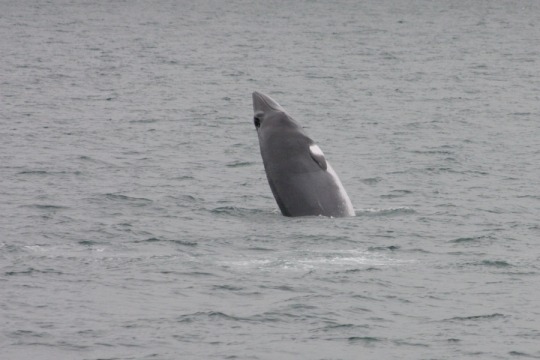
North Atlantic minke whale "Balaenoptera" acutorostrata acutorostrata
Observed by remi_bigonneau
#Balaenoptera acutorostrata acutorostrata#North Atlantic minke whale#Cetacea#Balaenopteridae#cetacean#whale#Europe#Iceland#Atlantic Ocean#Eyjafjördur
11 notes
·
View notes
Photo
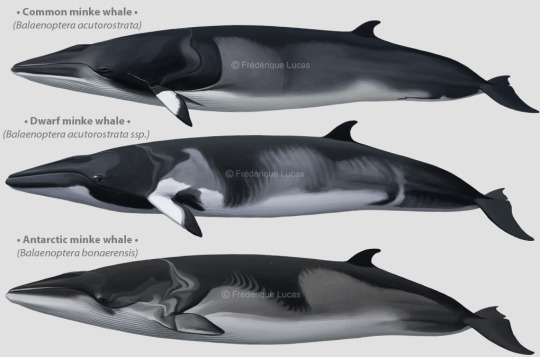
A multitude of minkes
Sorry for the long quiet here, guys. I’ve been very busy with my train driver’s license, as well as setting up a new aquarium and taking care of the residents. I haven’t been painting at all these months, but I’ll try to upload previously made art a bit more often!
Like this trio; as you may know I completed two pretty big commissions last year, and between them I got to paint all three species of minke whales again. The common minke I’ve painted several times before, the Dwarf and Antarctic not so much. The latter two are based on my previous paintings of them, so they may seen a bit familiar. I’m fascinated by the tiger stripes both possess. The Dwarf minke, though well known and vastly different looking from the Common minke, has yet to receive a scientific name. I hope you’ll enjoy these small but incredibly beautiful baleen whales.
#illustrations#scientific illustration#minke whale#dwarf minke whale#common minke whale#Balaenoptera acutorostrata#Antarctic minke whale#Balaenoptera bonaerensis#baleen whale#balaenopterid#digital animation
183 notes
·
View notes
Photo

Just passing by
Dwarf Minke Whale - Balaenoptera acutorostrata
Ribbon Reef, Great Barrier Reef, Queensland
Photographer: Pam Osborn
#pam osborn#photographer#australian geographic#dwarf minke whale#whale#balaenoptera acutorostrata#ribbon reef#reef#great barrier reef#queensland#nature
13 notes
·
View notes
Text
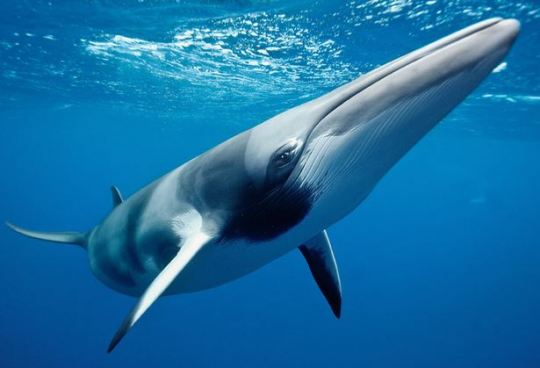
Dwarf minke whale | Balaenoptera acutorostrata
X
886 notes
·
View notes
Text

Grzimek's Animal Life Encyclopedia, vol. 11, Mammals II. 1972.
1.) Grey whale (Eschrichtius robustus)
2.) Sei whale (Balaenoptera borealis)
3.) Common minke whale (Balaenoptera acutorostrata)
4.) Fin whale (Balaenoptera physalus)
152 notes
·
View notes
Note
Got any whale facts?
1. The largest living thing on Earth is a minke whale, in the Arctic.
2. The smallest living thing is the sperm whale, which is also known as the "great whale" or "fin whale."
3. Sperm whales live in the tropical seas of the Atlantic Ocean and Indian Oceans.
4. The largest sperm whale, Orcinus orca, has been filmed from a distance traveling at up to 62 mph.
5. As of 2015, sperm whales have surpassed blue whales in length.
6. The largest sperm whale ever to be captured was a minke whale, caught in the 1930s off the coast of Japan.
7. The smallest sperm whale ever to be captured was also a minke whale, caught off the coast of Japan in the 1930s.
8. Giant sperm whales are rarely seen.
9. Sperm whales can grow up to 25 feet long.
10. The longest lived sperm whale is Taiji's sperm whale, which had a lifespan of about 60 years.
11. Sperm whales can swim great depths.
12. In 1997, a minke whale was caught off the coast of Japan. The whale was frozen and then thawed and then frozen, repeated.
13. There is a sperm whale population that hunts other sperm whales in the high seas.
14. Sperm whales are the only whales capable of a "sperm gun" attack. The sperm gun is a explosive that the sperm whale shoots at its prey. Sperm whales sometimes kill their prey by ramming it with their huge tails.
15. Sperm whales feed by stretching their tongues and vibrating them together in a "surfer's" motion.
16. The whale shark is the largest bony fish and eats plankton from the surface of the ocean.
17. Most sperm whales, or so-called "pod whales" are in their last decade of life.
18. The sperm whale sometimes lies on its back and vibrates its tail, creating a strobe light effect.
19. A sperm whale can produce a jet of water as tall as 21 feet (6 meters) in the form of a whale-riding wave. The "whale surf" can last for several hours.
20. The sperm whale is the only baleen whale that will eat bluefish, octopus, cuttlefish and shrimp.
21. The sperm whale can hold its breath for up to 20 minutes and is resistant to freezing and to weather.
22. The sperm whale is the only mammal that can turn its entire body upside down.
23. The spermaceti lizard is the largest lizard and eats mollusks, snails, and small fish.
24. The giant sperm whale is sometimes mistaken for a minke whale.
25. The sperm whale's tongue is five miles (8 kilometers) long.
26. New Zealand is the only country where sperm whales are common.
27. The southern hemisphere has more sperm whales than the northern hemisphere.
28. When sperm whales are found dead, they are usually their tails that are most visible.
29. Minke whales are sometimes mistaken for sperm whales because of their large heads.
30. The southern hemisphere has more sperm whales than the northern hemisphere.
31. The southern hemisphere has four times more minke whales than the northern hemisphere.
32. The minke whale is the second largest whale in the ocean after the sperm whale.
33. New Zealand has two minke whales in the same ocean.
34. The bones in a sperm whale's tail can be used for fishing.
35. The nose bone of the sperm whale is used to make shanking irons.
36. The tongue bone of the sperm whale is used to make shanks.
37. The tongue bone of the minke whale is used to make shanks.
38. Minke whales are the smallest known whales.
39. A sperm whale's head has a 25% greater surface area than a minke whale's.
40. Minke whales have a 57% greater surface area than sperm whales.
41. Humpback whales (Balaenoptera acutorostrata) have a 35% greater surface area than sperm whales.
42. Humpbacks have the highest surface area of any whale.
43. The tongue of the humpback whale can stretch up to 35 feet (10 meters).
44. The tongue of the humpback whale is used to smell.
45. The tongue of a humpback whale can change color from white to yellowish-green.
46. The tongue of a humpback whale is equipped with five "fingers" for smelling.
47. A humpback whale has a "nose" on its nose, which is equipped with four feelers used for tasting.
48. The tongue of a sperm whale can be used to produce butter.
49. When a sperm whale tastes something tasty, it may spit its food out of its mouth.
50. A sperm whale can swim for 70 miles (112 km) in a day.
51. The tongue of a sperm whale can be used as a mold to make jewelry.
52. The tongue of a sperm whale can be used to make cigarette lighters.
53. The tongue of a sperm whale can be used as a mold to make jewelry.
54. Other uses of the tongue include a mold to make salad dressings.
55. A minke whale's tongue is used to produce jewelry.
56. The tongue of a minke whale can be used to produce jewelry.
57. Some people use a minke whale's tongue to make jewelry.
58. The tongue of a minke whale can be used to make jewelry.
59. The tongue of a minke whale can be used to produce jewelry.
60. Minke whale whale meat can be used as a medicinal food.
61. Marine mammals that feed on plankton can grow to great sizes.
62. Sea lillies (Iobarium solitarum) are round marine plants which grow in freshwater.
63. Sea lilies are green when young and will turn blue as they get older.
64. Sea lilies reach a length of 40 inches (101 cm) and have 2-8 tentacles.
65. Sea lilies use their tentacles to capture prey such as shrimps, worms and small fish.
66. Sea lilies will grow more than 20-times their body size during the spring.
67. Sea lilies can grow to up to 5 feet (1.5 m) in height.
68. Sea lilies produce a substance from their stomata which are used to expel waste products from their body.
69. Sea lilies have 16-20 tentacles.
70. The sea lily is sometimes called the "sea cucumber."
71. A sea cucumber can grow to be as long as a quarter-mile long.
72. A sea cucumber has strong claws on its foot and a venomous stinger.
73. Sea lilies are poisonous to humans.
74. The stinger of a sea cucumber can pierce human skin and inject a toxin.
75. People with allergic reactions to pollen have died and been eaten by sea cucumbers.
76. The stinger of a sea cucumber can be used to grow the plants needed to kill the sea cucumber.
77. Sea lilies are poisonous to marine mammals.
78. Sea lilies are part of the rhizome of the ocean.
79. Sea lilies appear to be a great indicator of good water quality.
80. Sea lilies improve the environment by sucking up excess nutrients.
81. Sea lilies help to filter particles from water.
82. Sea lilies produce between 1,300 and 2,000 seeds.
83. The seed pods of sea lilies can be used to plant
3 notes
·
View notes